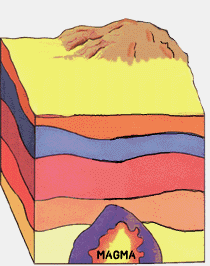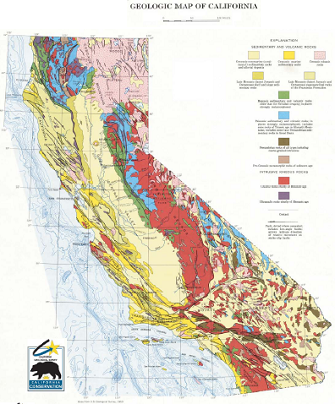
Updated on 05.05.15

|
|
Poorna's Physical Geology Pages |
Updated on 05.05.15 |
 |
| Plutonic Igneous Rocks | |||
|
"Rock Cycle" ― a theoretical concept that relates tectonism, erosion, and the various rock forming processes to the common rock types ― plausibly began with the formation of granitic crust and granite, the most common plutonic rock is also what the "Rock Cycle" ends with. Try the following links for interesting "Rock Cycle" presentations: http://www.bbc.co.uk/education/rocks/rockcycle.shtml http://www.intel.com/education/unitplans/rockcycle/rock.htm |
 |
 |
About Plutonic Igneous Rocks |
||||||||||||
|
Visit the URL: |
|
||||||||||||
 |
|||||||||||||
|
|
||
 |
|||
|
The red and pink shaded regions in this geological map of
California are intrusive igneous bodies. This map can be accessed at the
California Geological Survey website
http://www.consrv.ca.gov/cgs/information/geologic_ mapping/index.htm#Related%20Links. These igneous intrusives form the bulk of the Sierra Nevada Ranges. Contrasted with these large batholiths are such more common though shallow or near-surface features as dikes and sills. |
|
|
||||